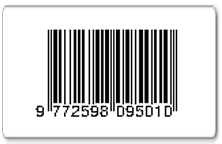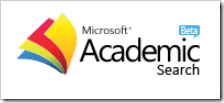Analisis Tingkat Kesehatan Bank Syariah Indonesia (BSI) Dengan Metode RGEC Pada Periode 2019-2022
Abstract
Keywords
Full Text:
PDFReferences
Dewi, M. (2018). ANALISIS TINGKAT KESEHATAN BANK DENGAN MENGGUNAKAN
PENDEKATAN RGEC ( RISK PROFILE , GOOD CORPORATE GOVERNANCE ,
EARNINGS , CAPITAL ) ( Studi pada PT . Bank Rakyat Indonesia , Tbk Periode 2013-
). 2(2).
eni sulistiani, chhaidisr setiaji. (2022). RGEC : Analisis Tingkat Kesehatan Bank BCA
Syariah Sebelum dan Selama. 8(03), 3670–3675.
Fahrial. (2018). PERANAN BANK DALAM PEMBANGUNAN EKONOMI NASIONAL
FAHRIAL. 1(1), 179–184.
Kusnanto, A. (n.d.). Risk profile, good corporate governance, earning, capital (rgec)
method sebagai instrumen pengukur tingkat kesehatan perbankan syariah di
indonesia. 124–136.
Mandasari, J. (2015). Analisis Kinerja Keuangan dengan Pendekatan Metode RGEC pada
Bank BUMN Periode 2012-2013. Jurnal Administrasi Bisnis, 3(2), 363–374.
Nafisah. (2016). analisis kinerja keuangan dengan metode RGEC pada bank umum
syariah 2012-2015.
Saleh, A. (n.d.). Challenges and Opportunities for Community Empowerment Practices in
Indonesia during the Covid-19 Pandemic through Strengthening the Role of Higher
Education. 1105–1113.
Hafiz, A. P. 2018. Penilaian Tingkat Kesehatan Bank Syariah Dengan Metode CAMEL Dan
RGEC (Studi Pada Bank BNI Syariah Tahun 2011-2015). ILTIZAM Journal of Sharia
Economic Research. 2(1): 66-83.
Hamzah, Z. Z., dan D. Anggraini. 2019. Analisis Tingkat Kesehatan Bank Pada PT Bank
Syariah Indonesia, Tbk dengan Menggunakan Metode RGEC (Risk Profile, Good
Corporate Governance, Earning & Capital) Periode 2013 - 2017. Economicus. 13(1):
–56.
Fitriana, Nur, Ahmad Rosyid, and Aguus Fakhrina. 2015. “Tingkat Kesehatan Bank BUMN
Syariah Dengan Bank BUMN Konvensional: Metode RGEC.” Jurnal Ekonomi dan
Bisnis 17(2): 1–12.
report, Annual, PT Bank Syariah Indonesia. 2021. "2021 Annual Report PT Bank Syariah
Indonesia".
report, Annual, PT Bank Syariah Indonesia. 2022. "2022 Annual Report PT Bank Syariah
Indonesia".
Sintha, Lis, Ina Primiana, and Sulaiman Rahman Nidar. 2016. “Bank Health Analysis Based
on Risk Profile, Earnings and Capital.” Actual Problems of Economics 181(7): 386–95.
Sunardi, Nardi. 2019. “Analisis Risk Based Bank Rating (Rbbr) Untuk Mengukur Tingkat
Kesehatan Bank Syariah Di Indonesia.” Jimf (Jurnal Ilmiah Manajemen Forkamma)
(2): 50–66.
Bank Indonesia. Peraturan Bank Indonesia No. 13/1/PBI/2011 Tentang Sistem Penilaian
Kesehatan Bank Umum. Jakarta: BI, 2011
Sri Haryati, Emanuel Kristijadi. 2014. The Effect Of GCG Implementation And Risk Profile
On Financial Performance At Go-Public National Commercial Bank. Journal of
Indonesian Economy and Business. Volume 29, Number 3, 2014, 237 – 25.
Surat Edaran Bank Indonesia. 2007. Surat Edaran Bank Indonesia No. 9/12/DPNP Perihal:
Pelaksanaan Good Corporate Governance bagi Bank Umum . Jakarta: Bank
Indonesia
DOI: http://dx.doi.org/10.35448/jiec.v7i1.19906
Refbacks
- There are currently no refbacks.

This work is licensed under a Creative Commons Attribution-ShareAlike 4.0 International License.
Copyright © Syi’ar Iqtishadi: Journal of Islamic Economics, Finance and Banking.


















